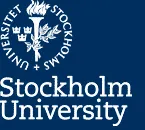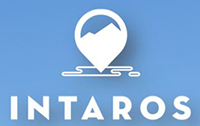
Stockholm University (SU, www.su.se) is the largest university in Sweden, with over 64,000 students and 5,000 staff. The Department of Meteorology (MISU, www.misu.su.se) is the leading meteorological department in Sweden, established 1947 and first lead by the renowned professor Carl-Gustaf Rossby, one of the fathers of modern dynamic meteorology, and later by professor Bert Bolin; father of the Intergovernmental Panel of Climate Change (IPCC). Today research at the department spans four specialties: Dynamic Meteorology, Physical Oceanography, Atmospheric Physics and Chemical Meteorology. In particular within Dynamic Meteorology and Chemical Meteorology, there are substantial experiences in Arctic research, both modeling and observations. The department belongs to the Mathematics and Physics sub-faculty of the Faculty of Sciences, and has about 80 staff; ~30 scientists and ~30 PhD students, while the rest are Technical and Administrative (TA) support staff. Among the scientists ten are professors/lecturers, five Assistant Professors (or similar) and the rest are postdoctoral scholars. MISU also has two undergraduate programs; a bachelor program in Meteorology and a Masters program in Atmospheric sciences, Oceanography and Climate. Together with three other departments at SU, MISU is part of the Bolin Centre for Climate Research (www.bolin.su.se).
Role in the project
MISU will contribute to WP1, WP2 and WP3. In WP2 we will explore the possibility to more efficiently use hyperspectral infrared satellite information to study of the vertical structure of the atmosphere over the Arctic Ocean, where very little other information on this exist. We will start by utilizing coastal sounding sites and soundings from expeditions and gradually in collaboration with other partners build a database on the vertical structure of the Arctic atmosphere, with a specific focus on temperature and moisture. We will also explore how to use satellite data for the vertical structure of clouds, using active sensors south of 82 °N to calibrate other sensors to expand the data to areas farther north. In WP3 we will develop a program and best practices for in situ Arctic observations on ships-of-opportunity, using a concept that we will develop on the Swedish research icebreaker Oden, in collaboration with the Swedish Secretariat for Polar Research (WP1). Initially we will base the observations on reasonably simple concepts and gradually expand to instruments which make it possible to probe the vertical structure of the atmosphere. The leading idea is that as many ships as possible should take observations when navigating the Arctic Ocean, first all research icebreakers (regardless of the specific science targets of the expeditions) and later also other ships.
Stockholm University
Department of Meteorology
Stockholm University
106 91 Stockholm
Sweden
